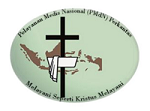Regarding The Image
by Helen Barratt
Read: Regarding The Image (Part 2)
Implications of the Image
In the past, the concept of the sanctity of human life was perhaps most clearly associated with Christian concerns about abortion.39 In recent years, discussions have have shifted towards topics such as voluntary euthanasia and assisted dying,40 as well as the use of novel technologies such as stem cells to create human life.41 However, at the heart of each of these very different issues lies a fundamental challenge to the biblical view of what it means to be human and particularly what is acceptable at the limits of life.
Reflecting on what the Bible teaches us about being human not only illuminates our path as we seek to offer solutions to healthcare dilemmas such as these, but also demonstrates great truths about the relationship we have with our Creator God. The Bible makes it clear that mankind is made in the image of God, This in turn makes him something more than the rest of the animal kingdom because, as far as we know, he is the only creature who bears that image. We also see that the image lies at the heart of the ‘specialness’ placed on human beings by God. This value is not a consequence of our actions, but simply a gift. It is also not a capacity we possess or lose, but rather a part of our very essence. Because of the image and our likeness to God, taking the life of another human being is explicitly ruled out.42
For secular writers, and indeed for many Christians with a functionalist perspective of the image, my value and claim to personhood depends on what I can do: if my function is diminished, it follows that my moral worth must also decrease. On the basis of this argument, human embryos and the lives of the frail and elderly, for example, are expendable. Returning to our case study, however,the wholistic’ species perspective holds that the value of those such as Audrey, unconscious after a stroke, lies not in what they can do, but in what they are. Mankind is not only ‘crowned with glory and honour’ but made in the very likeness of God to represent him on earth. Our lives therefore not only have intrinsic value because of his image in us, but are also not simply our own to do with as we please. As Elihu in the book of Job explains: ‘if it were his intention and he withdrew his spirit and breath, all mankind would perish together and man would return to the dust.’43
In conclusion, the image of God stamped on us is not a capacity we gain or lose, but part of our make up as human beings. We are very reflection of our Creator: far more than just the next link in a great evolutionary chain, mankind is the pinnacle of creation. It is this we are called to defend.
Helen Barratt is a Wellcome Trust Research Training Fellow at University College London and a Specialist Registrar in Public Health. She also has an MA in bioethics.
References
- Genesis 1:26, 27
- Psalm 8:3-8
- Hoekema A. Created in God’s image. Grand Rapids: Eerdmans. 1994:13
- Genesis 1:28-30
- See for example the statue of King Nebuchadnezzar in Daniel 3.
- Motyer A. Look to the Rock Leicester: IVP, 1996:201
- Packer Jl. Reflected Glory. Christianity Today, 2003 December. www.christianitytoday.com/ct/2003/012/20.56.html Accessed 16 August 2011.
- 1 Corinthians 11:7
- Colossians 1:15
- John 1:14
- 2 Corinthians 4:4-6
- Hebrews 1:3
- John 12:45
- Ephesians 4:24
- Hebrews 10:10-14
- Motyer A. Look to the Rock. Leicester: IVP, 1996:79
- 2 Corinthians 3:18
- 1 John 3:2
- Wyatt J. Matters of Life and Death. Leicester: IVP, 1998:69-70
- Grudem W. Bible Doctrine. Leicester: IVP, 1999:263
- Cairns D. Image of God in Man. London: Fontana, 1973: 80
- Aquinas T. Summa Theologica, 1.93.2. www.newadvent.org/summa/109300.htm Accessed 16 August 2011
- Hoekema A. Created in God’s image. Grand Rapids: Eerdmans. 1994:39
- Augustine. (396) On the Trinity (Book IX). www.newadvent.org/fathers/130109.htm Accessed 16 August 2011
- Sullivan DM. The Conception View of Personhood: A Review. Ethics and Medicine. 2003;19(1):11-33
- Calvin, J. Institute of the Christian Religion. Vol 1. ed McNeill JT. Trans. Ford, Lewis, Battles. Philadelphia: Westminster Press, 1973:186
- Calvin J. Institutes of the Christian Religion. Vol 1. ed McNeill JT. Trans. Ford, Lewis, Battles. Philadelphia: Westminster Press. 1973:189-190
- Hoekema A. Created in God’s image. Grand Rapids: Eerdmans, 1994:46
- Barth K. Church Dogmatics Vol III/1. Edinburgh: T. & T. Clark, 1958:195
- Clines D. The image of God in Man. Tyndale Bulletin 1968; 19:53-103.
- Atkinson D. The Message of Genesis 1-11. Leicester: IVP, 1990:36-37
- Rae S. Cox P. Bioethics: A Christian Approach in a pluralistic age. Grand Rapids: Eermans, 1999:167
- Calvin J. Institutes of the Christian Religion. Vol. 1. ed McNeill JT. Trans. Ford, lewis, Battles. Philadelphia: Westminster Press. 1973:188
- Rae S, Cox P. Bioethics: A Christian Approach in a pluralistic age. Grand Rapids: Eerdmans. 1999:132
- Nelson S. The Least of These. Ethics and Medicine 2004; 20:1.
- Sullivan DM. The Conception View of Personhood: A Review. Ethics and Medicine. 2003; 19(1):11-33
- Proverbs 22:2
- Quoted in Rae S. Cox P. Bioethics: A Christian Approach in a pluralistic age. Grand Rapids: Eerdmans, 1999:138
- Sims P. Abortion. CMF File 23 (2003)
- Saunders P. Assisted suicide: the law is both clear and right. Triple Helix 2008; Winter:3
- Pickering R. Stem cells. Triple Helix 2007; Winter:4
- Genesis 9:6
- Job 34:14-15
Scripture quotations taken from The Holy Bible, New International Version Anglicised Copyright © 1979, 1984 by Biblica, Inc. TM
Used by permission of Hodder & Stoughton Publisher, a division of Hachette UK Ltd.
All rights reserved.
“NIV” is a registered trademark of Biblica, Inc.TM UK trademark number 1448790.
Christian Medical Fellowship (CMF) Files No. 46, 2011
